Posts In The “South America” Category
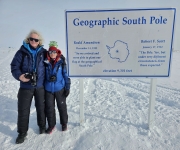
For the first half of the 20th century, the only people who had stood at the South Pole were the 1911/1912 expedition teams of Norwegian Roald Amundsen and Briton Robert F. Scott. It wasn’t until 1956 that humans again set foot at the pole, this time to establish the Amundsen-Scott South Pole Station research center…
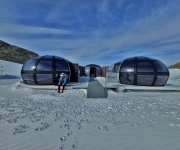
We first visited Antarctica aboard the National Geographic Endurance in late 2022 and loved the raw beauty of the snow-covered wilderness, with fantastically-shaped icebergs and rugged mountains soaring upwards from land and sea. The wildlife was exceptional as well, but it was the scenery that really drew us in. We knew we’d be back, but…
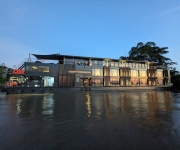
Launched in 2020, the Aqua Nera is the newest by a decade of the roughly half-dozen commercial river boats that cruise the Peruvian Amazon River. The ship is operated by Aqua Expeditions, who have branched out from their beginnings on the Amazon River to operate small-boat cruises in the Galapagos, Indonesia, and the Mekong River….
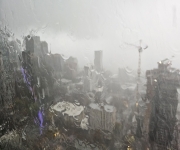
November brought winter weather to Seattle, with heavy rainfall and temperatures that brushed around freezing. We escaped the cold weather, but not the rain, on an Amazon River cruise later in the month. Temperatures there were in the high 90s F (32 C), with the sporadic downpours typical of the tropics. Preparing for the trip…
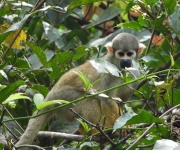
The Amazon River is the largest river in the world by discharge volume and second longest in the world (after the Nile). Originating in Peru, the Amazon flows 4,000 miles (6,400 km) eastward drain into to the Atlantic Ocean in Brazil. The river has two seasons, high water and low water, with a 35-45-ft (10.6-13.8m)…
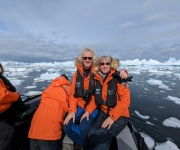
We brought a lot of gear with us on our trip to Antarctica. Most was for keeping warm, dry, and comfortable in the colder weather, but we also brought a variety of other equipment, including cameras, binoculars and a dry bag. In this post, we describe what we brought, what we were glad to have,…

Iguazu National Park was named a UNESCO World Heritage site in 1984 for its “striking natural beauty and the magnificent liaison between land and water” and also was voted as one of the New 7 Wonders of Nature. Straddling the border between Brazil and Argentina, the Iguazu River pours over the edge of volcano-blasted Parana…
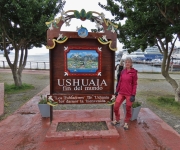
At latitude 54°48′ S, Ushuaia is the earth’s southernmost city and bills itself as the “end of the world”. (Port Williams in Chile is actually further south, but has a much smaller population and is classified as a town.) Ushuaia’s population initially was not Argentinian, but British. The city was founded in the 1800s by…

In Choose Your Cruise Operator Carefully, we discussed the risks inherent in an Antarctic cruise, and described the three deaths that had occurred in the course of two weeks near the start of the 2022-2023 cruise season. It turns out there was actually four deaths in that period. The situation has become serious enough that…
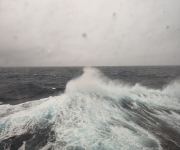
The Drake Passage lived up to its reputation for big weather on our two-night passage back to Ushuaia from the Girlache Strait. We experienced 33-40 ft (10-12m) seas with winds blowing steadily 60 kts and gusting to 70. We didn’t, however, experience the dreaded “Drake Shake”. The National Geographic Endurance handled the conditions remarkably well,…
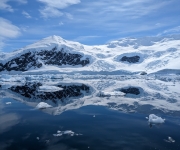
The Girlache Strait extends from the northern end of the Wilhelm Archipelago and separates the Palmer Archipelago from the Antarctic Peninsula. It was discovered in 1898 by Lt. Adrien de Gerlache, leader of the 1897-1899 Belgian Antarctic expedition. The crew included famed Norwegian polar explorer Roald Amundsen, who in 1911 was the first to reach…
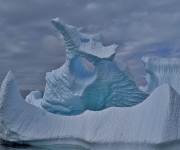
The Wilhelm Archipelago lies north of the Antarctic Circle and is the most southern point on the majority of Antarctic Peninsula cruises. It also is one of the most popular destinations, particularly scenic Lemaire Channel between Booth Island and mainland Antarctica. The protected waterway often is wind-free, yielding near-perfect reflections of snow and ice in…
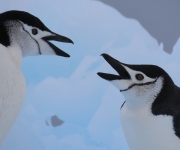
Christmas Day in Antarctica was a big day for wildlife sightings, including an Emperor Penguin, Chinstrap penguins, crabeater and Weddell seals, humpback whales and Orcas. We were lucky to see an Emperor Penguin, rare this time of year. After navigating into ice-filled Barlas Channel, we set out for a tour in the zodiacs and found…
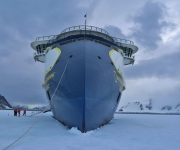
Antarctica is the only continent without a permanent native population. Instead, the year-round population of about 1,000 is made up mainly of visiting scientific researchers and support staff who live in roughly 50 permanent stations throughout the continent. A similar number of seasonal stations allows the summer population to reach 4,000. Forty-two countries operate research…
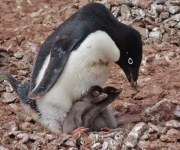
Pourquois Pas Island, at the north edge of Marguerite Bay, was discovered by Jean-Baptiste Charcot. He led the 1908-1910 French Antarctic Expedition, and named the island after his ship. Charcot in turn is the namesake for the French expedition ship Le Commandant Charcot, the highest rated ice class vessel in the world, that we’ll be…

Stonington Island in Marguerite Bay is the site of two early research stations. East Base, the oldest American Antarctic station, was built starting in 1939 but hasn’t been used since 1948. The British Base, Station E, was used for many historic survey missions in the 1940s and saw use until the mid 1970s. From Red…
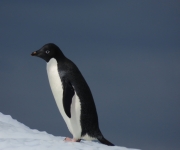
After our second night at sea through the Drake Passage, we woke up in Antarctica. Massive icebergs floated everywhere, some surprisingly close to the ship, in an endless variety of fantastic shapes and sizes. Ashore, steep and snow-covered slopes soared straight up from the water. Antarctica is much more mountainous than we were expecting. Taking…
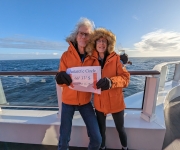
Our two-day crossing of the infamous Drake Passage from Ushuaia to the Antarctic continent was wonderfully calm. We passed the time at the bridge, taking in several educational seminars, and just enjoying being on board the National Geographic Endurance. The ship’s public areas are comfortable and generously laid out, never feeling cramped despite a full…